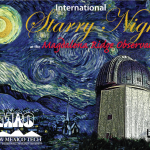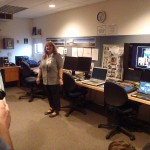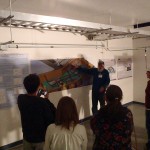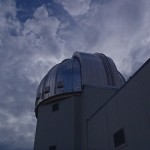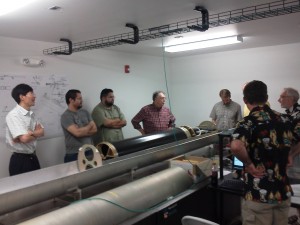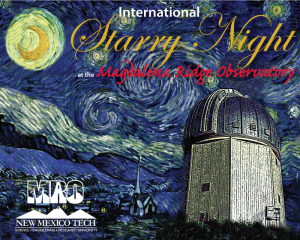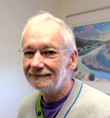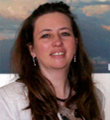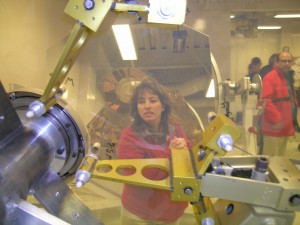
Dr. Michelle Creech-Eakman looking at a Keck segment at the summit of Mauna Kea, Hawaii. The Keck Interferometer, which Creech-Eakman worked on at JPL, closed in 2012 and which, in part, the MROI will replace.
Dr. Michelle Creech-Eakman has been working for years on a project of astronomical proportions and she recently gave a TEDxABQ talk to a packed Popejoy Hall at University of New Mexico (UNM) in Albuquerque about this ambitious project and its unmatched capabilities.
Dr. Creech-Eakman’s talk, “The Magdalena Ridge Observatory houses technology that will change our understanding of the universe”, described the array of ten telescopes that is being constructed on Magdalena Ridge. Creech-Eakman is Chair of the Physics Department at New Mexico Tech (NMT) and Project Scientist for the Magdalena Ridge Observatory Interferometer (MROI).
TED, a prestigious national nonprofit devoted to Ideas Worth Spreading was created in 1984 as a conference to bring together people from the three worlds of Technology, Entertainment, and Design (TED). In addition to two annual conferences — the TED Conference and TEDGlobal — TED includes the award-winning TED Talks video site, the Open Translation Project and TED Conversations, the annual TED Prize, and the TED Fellows and TEDx programs.
In the words of the TED organization, “The TEDx program gives communities, organizations and individuals the opportunity to stimulate dialogue through TED-like experiences at the local level.”
The array of telescopes that is currently being constructed on Magdalena Ridge “will have three hundred times the resolution of the Hubble telescope”, said Dr Creech-Eakman during her presentation. She explained the science of Interferometry, the combining of multiple beams of lights to create a single image, pointing out that “we all carry an interferometer around with us at all times in the form of your own two eyes”. She also explained how recent cuts in Federal funding to scientific projects have placed the completion of the Interferometer in jeopardy as she called for public support for funding to complete the project.
“The impact of the present funding squeeze on science projects is devastating” said Dr Ifan Payne, Program Director for the Magdalena Ridge Observatory, “It is so important to be able to participate in a public forum such as this and to have the opportunity to explain the importance of our science, the positive impact that the project has on the economy of the state, the effect that funding cuts have had on our ability to complete the construction of the MROI, and why, therefore, the need to seek alternative participation”.
Speaking of her experience of standing in front of a packed Popejoy Hall, Dr. Creech-Eakman said, “I’ve been teaching for many years so standing up in front of people and speaking about these concepts isn’t new to me, but at TEDxABQ, the audience was a lot bigger than I’m used to. They were so interactive and responsive, which brought a whole new dimension to the talk that it never had in rehearsal.”
“We’re all made of star stuff,” explained Dr. Creech-Eakman during that talk, “and that’s pretty incredible if you think about it. That’s why we’re building this interferometer: So we can learn more about the stars.” And therefore about ourselves. Which is why, she concluded, we should all be interested in seeing the interferometer completed, even though we may not all be astronomers.
A video of Dr. Michelle Creech-Eakman’s TEDx talk can be viewed below or directly from the TEDxABQ YouTube page.
For a list of all the talks at the TEDxABQ event please visit the TEDxABQ YouTube page.

